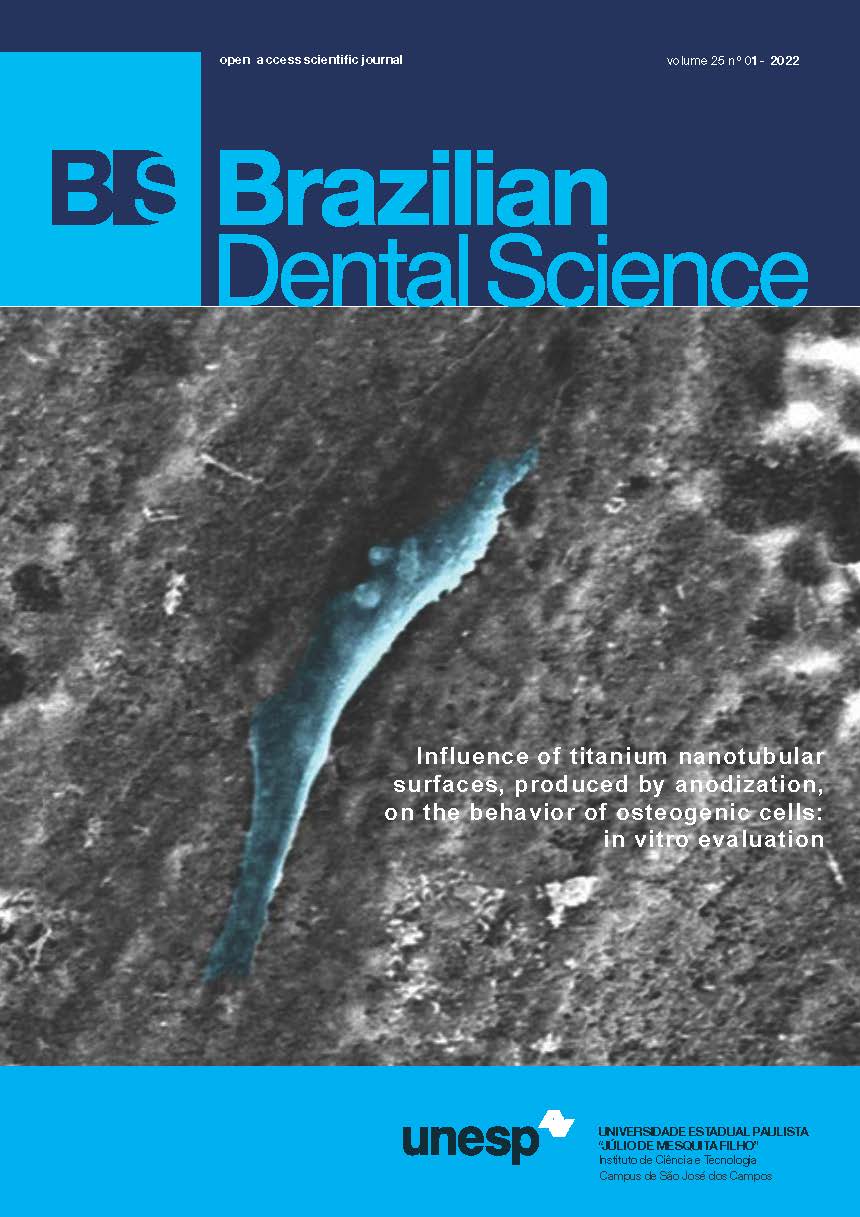Evaluation of alkaline phosphatase as a biomarker in the healing progression following tooth extraction
ALP as biomarker in post extraction healing
DOI:
https://doi.org/10.4322/bds.2022.e2837Abstract
Objective: The progression of a healing socket following an extraction is usually analysed through clinical
examination and radiographic investigation. Whilst soft tissue healing is usually maintained well, healing
progression of hard tissue is more challenging to predict and manage, with issues such as a dry socket or malunion
of the underlying bone. Serum biomarkers for bone healing progression, such as alkaline phosphatase
(ALP), could prove helpful as a diagnostic tool for early intervention. Material and Methods: Twenty healthy
18-30-year-old individuals who were to extract lower impacted wisdom teeth were included. 2ml of blood was
collected before treatment, 48 hours after then following samples were collected 1 month, 2 months and 3 months
after the procedure. Intra-oral radiographs were taken at the end of the three months. Results: There was a
significant correlation elicited with the healing and ALP levels at 1,2 & 3 months’ time intervals (p<0.05), where
17 patients who had a substantial increase in the levels of ALP also had satisfactory healing after three months.
Three individuals who did not show any increase in ALP level did not have satisfactory healing. Conclusion:
ALP is a useful supplementary biomarker for bone healing.
KEYWORDS
Alkaline phosphatase; Tooth extraction; Bone healing; Oral surgery.
Downloads
Downloads
Published
Versions
- 2022-03-29 (2)
- 2022-03-14 (1)
How to Cite
Issue
Section
License
Brazilian Dental Science uses the Creative Commons (CC-BY 4.0) license, thus preserving the integrity of articles in an open access environment. The journal allows the author to retain publishing rights without restrictions.
=================




























